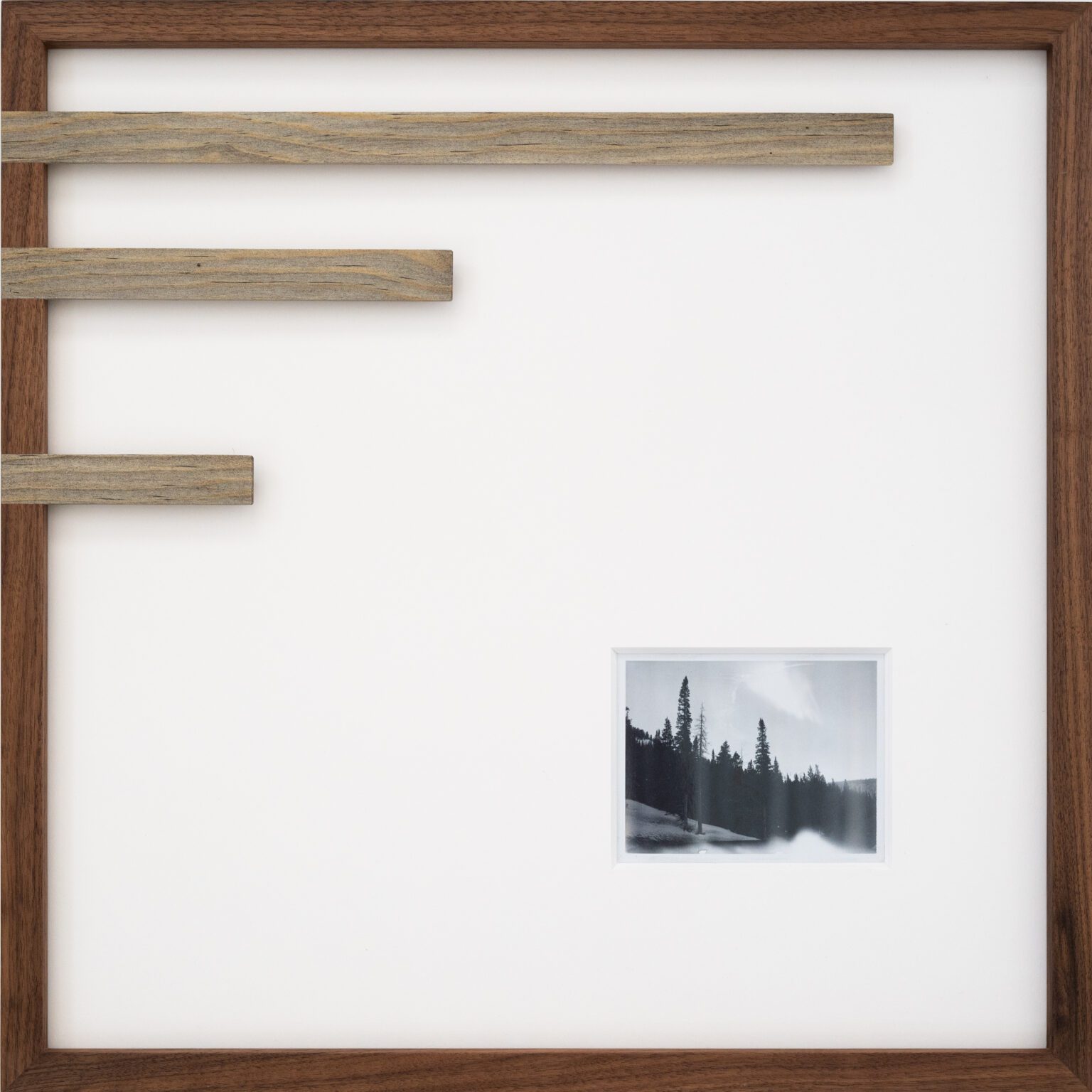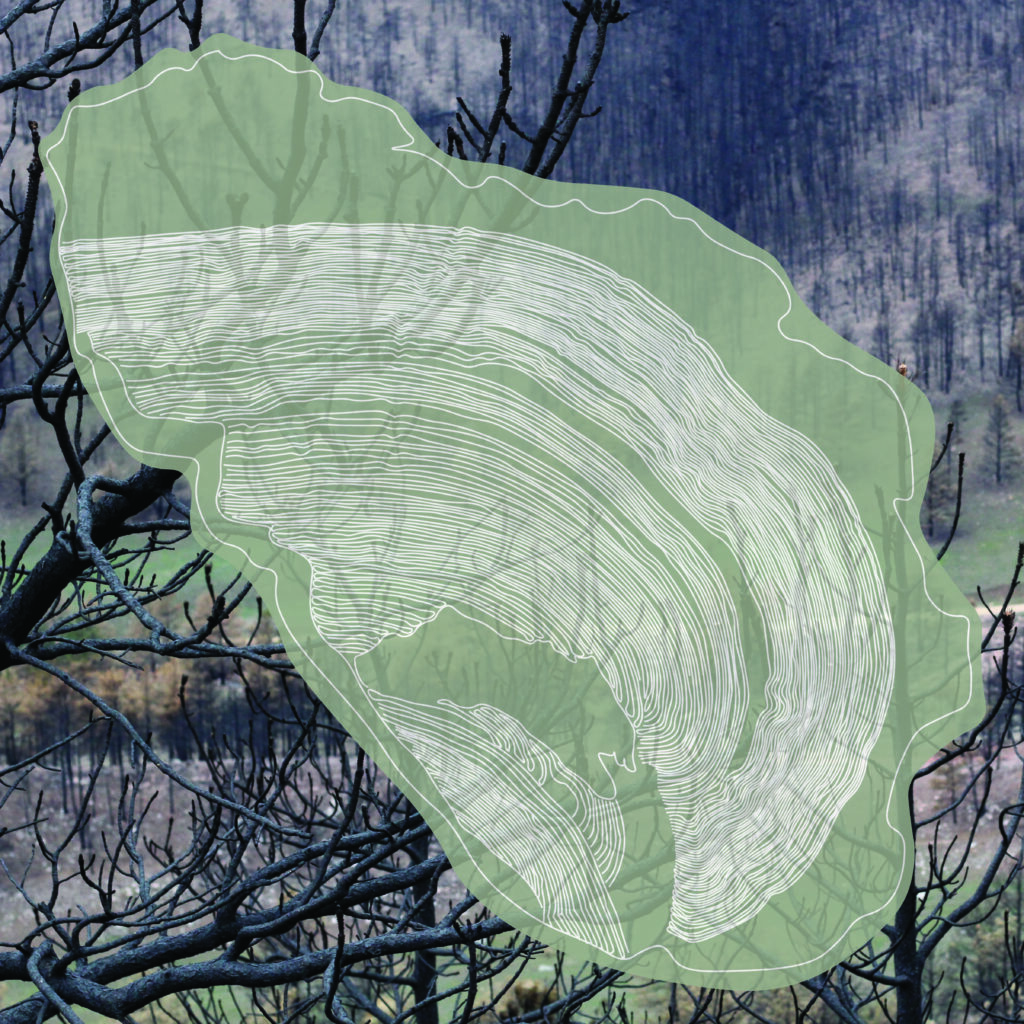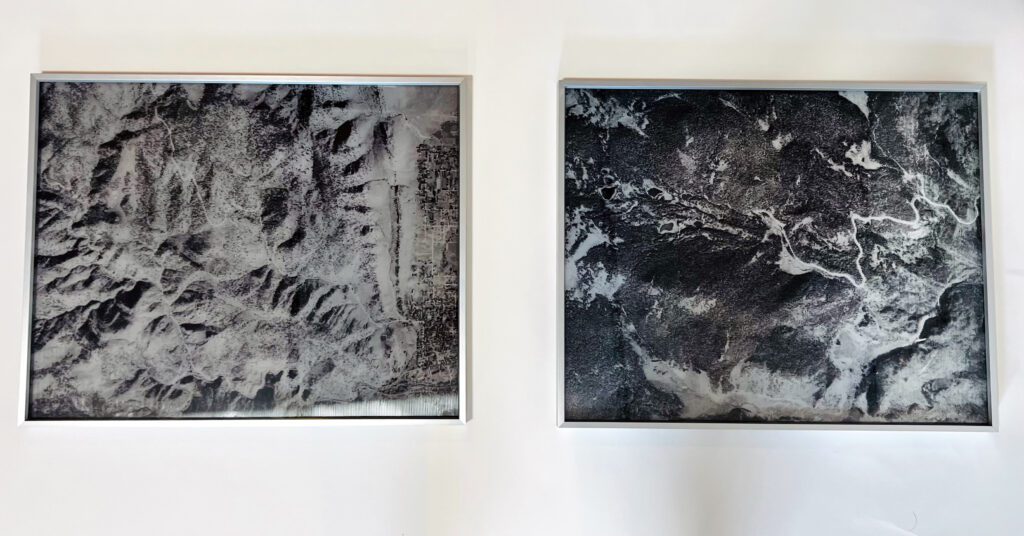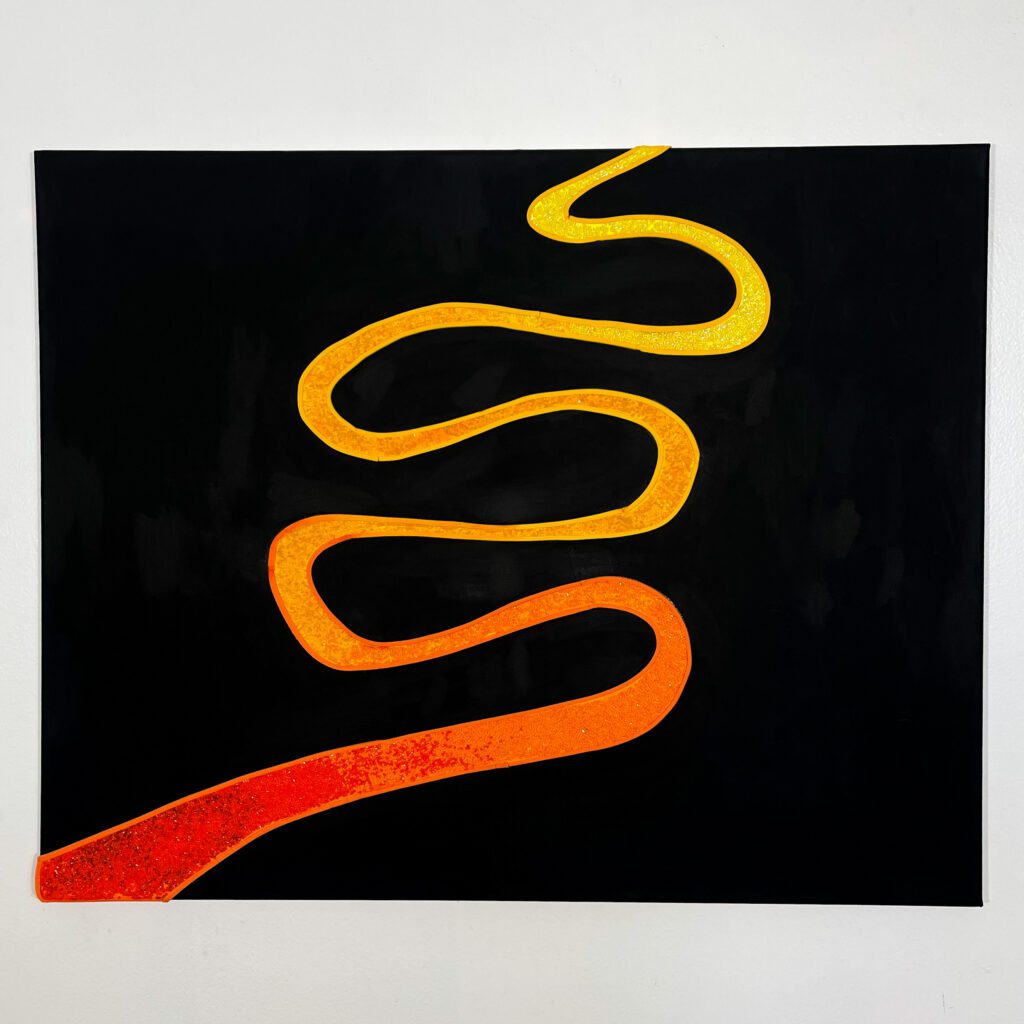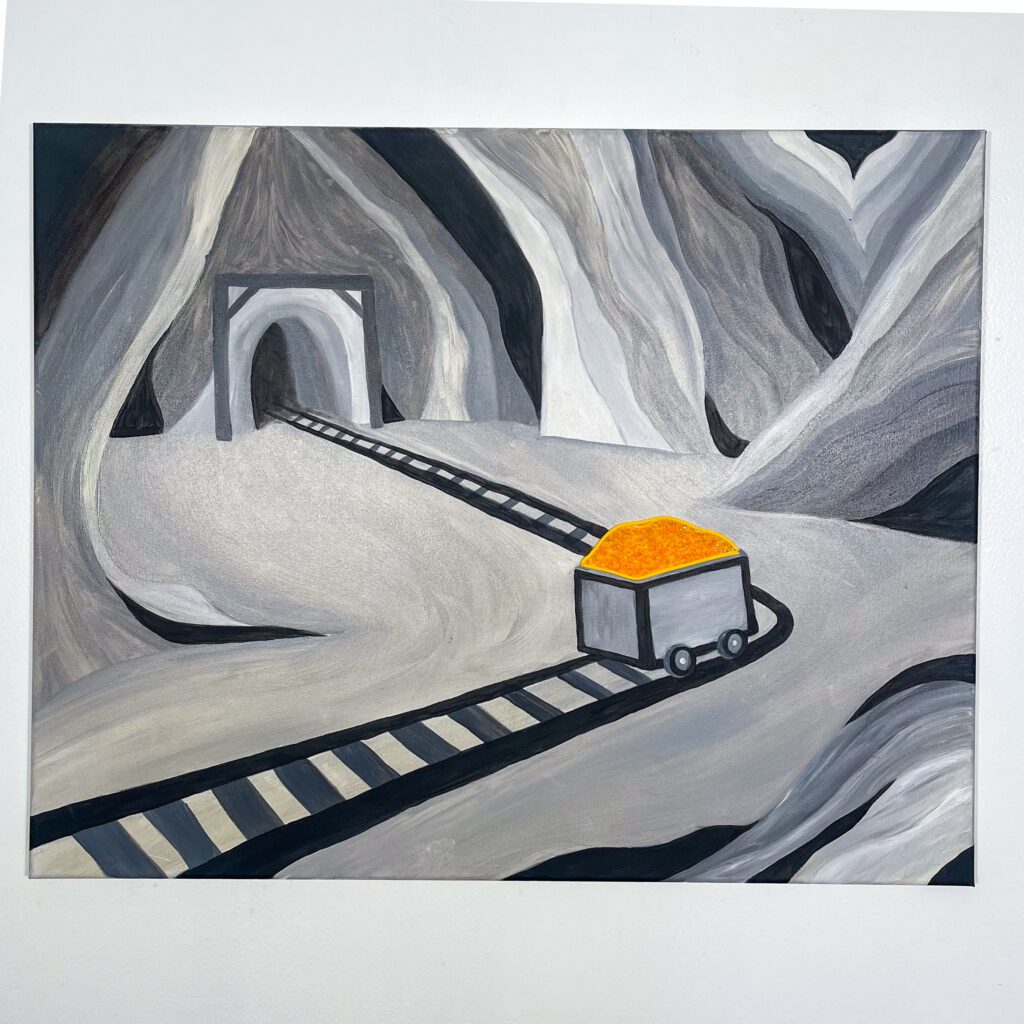When you are viewing the art, think about the questions, ideas and activities posed by the artists below. In addition, ask yourself, how does this exhibition as a whole help make visible and knowable critical social and environmental issues facing Coloradan’s (and others) across communities and locations?
Colorado Springs • Hydroecologies, Unseen in the Front Range Urban Corridor
- Artist – Colorado Springs: Darya Warner, MFA
- Scientist – CU Boulder: Suzanne Anderson, PhD
How do we see the unseen? HydroEcologies series explore the hidden story of relationships between groundwater and human impact on climate along the Front Range Urban Corridor. Data of selected wells is transformed into visual narrative using locally sourced materials to address the ongoing drought crisis in the area. We leave traces of our impact on the surrounding world that becomes a part of the unseen story of water.
Salida • Spruce Beetles: Symptom or Disease?
- Artist – Salida: Beth Johnston, MFA
- Scientists – CU Boulder: Kendi Davies, PhD & Laura Dee, PhD
Beetle kill is often depicted as a simple villain/victim story where the beetle is the villain. But what else could be going on that allows the beetle to flourish? For example, how might forest management practices be contributing to the influx of beetle populations? What about conditions that were put in place 100 years ago? Weather patterns play a significant role in beetle populations, but what causes a change in the weather pattern?
Del Norte • Making the Invisible Visible: Groundwater in the San Luis Valley
- Artist – Del Norte: Jocelyn Catterson
- Scientist – CU Boulder: Holly Barnard, PhD
This artwork explores the ways communities of the San Luis Valley are experiencing and responding to issues tied to groundwater. The paintings represent an ongoing conversation between the artist, scientists, and the community on how to “make visible” the connections between changes in snowmelt and runoff, agriculture in the valley, and the aquifer below.
What connections do you notice between the pieces? How might water, drought, and fire be connected? What through lines do you see between all of the pieces?
Grand Junction • A Drought Trinity in the Upper Colorado River Basin
- Artist – Grand Junction: TJ Smith
- Scientist – CU Boulder: Ben Livneh, PhD
When viewing the artwork, I ask that you step back and create a small triangle with your hands by overlapping them until a triangle forms in the center. Then, stand at a distance that allows you to hover over the blue triangle(s) of the art, thus blocking out the flames behind. This act symbolizes the idea that each one of us has the ability to protect against the heat and that the health of our waters resides within our hands. Each one of us holds the power for positive change.



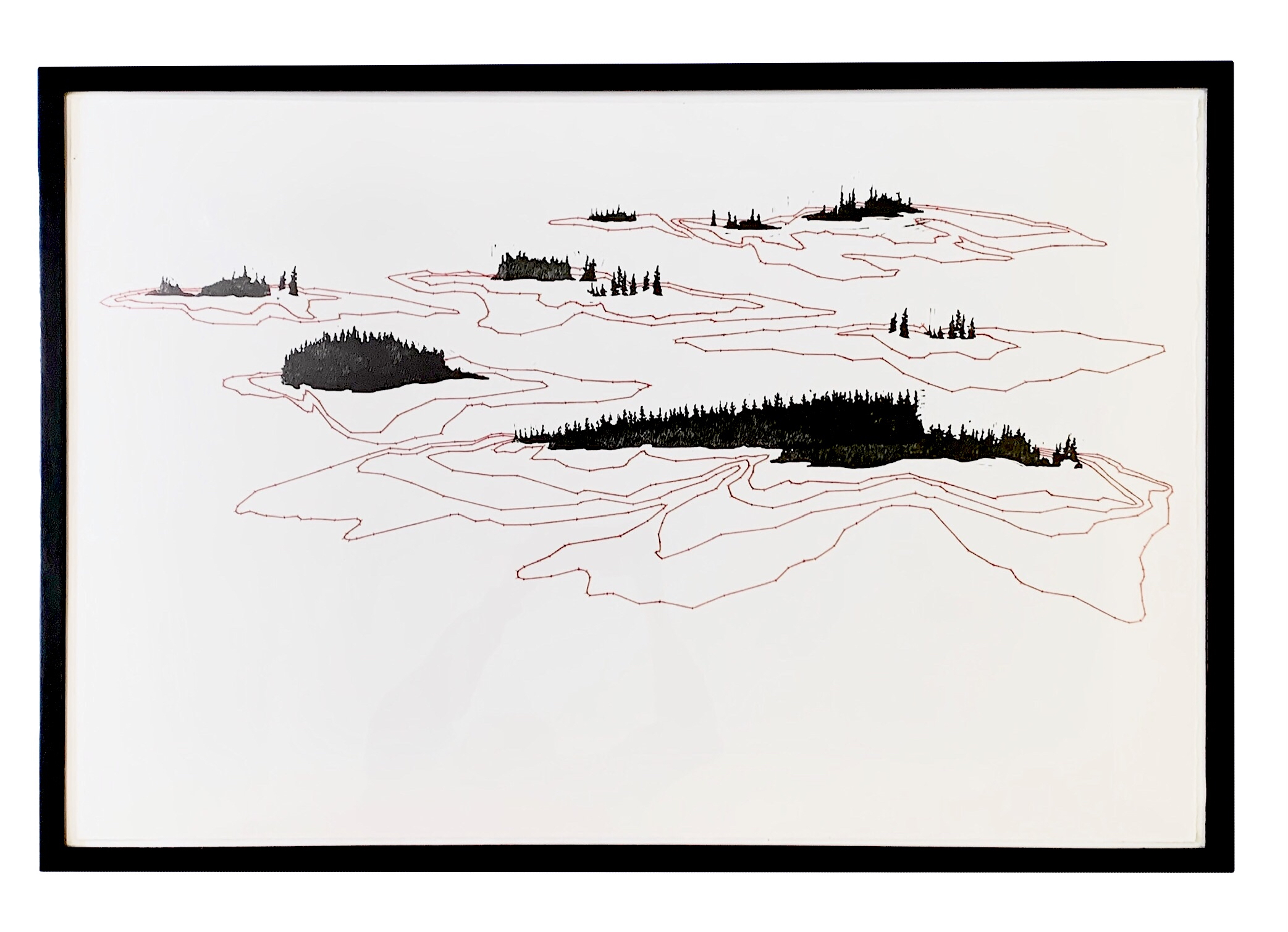
Summit County • Snowpack Feeding Dillon Reservoir
- Artist – Frisco: Hannah Taylor
- Scientist – CU Boulder: Noah Molotch, PhD
Where are places near you where you can hear water? Where you experience shifts in temperature, but beyond feeling warm or cold. Can you see cold? Hear freezing or melting? Stepping back, where is that water coming from? How does this connect you to your watershed? What sorts of infrastructure connects you to neighboring watersheds? Who was this infrastructure built for, and how will it hold up as the timing and pace of snowmelt shifts?
Boulder • Reflecting on Wildfire in the Colorado Front Range
- Artist – Boulder: Amy Hoagland, MFA
- Scientist – CU Boulder: Tania Schoennagel, PhD, CU Boulder
What comes to mind when you think about forest fires? How might you cultivate resilience in relationship with forest fires? How might we learn to live with fire? In what ways can fire be positive?
Durango: Mining the Mineral Belt
- Artist – Durango: Maddie Sanders
- Scientists – CU Boulder: Nicole K. Brooks,Diane McKnight, PhD
Denver: Air Quality at a Commerce City Middle School
- Artist – Denver, Colorado: Dennis Doyle, MFA
- Scientist – CU Boulder: Bri Dobson, PhD Candidate
Where does pollution come from in your region? Think of a memory where you encountered air pollution. What did it feel like, during and after? Consider how our own voices, and the stories we tell are environmental data. Who needs to hear those stories? Who in your community can you join voices with?








